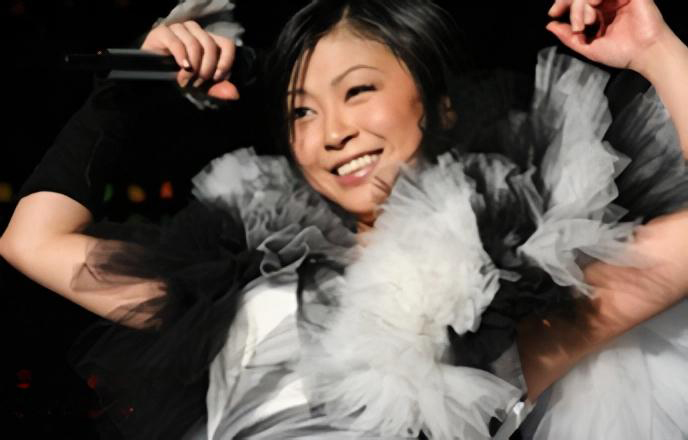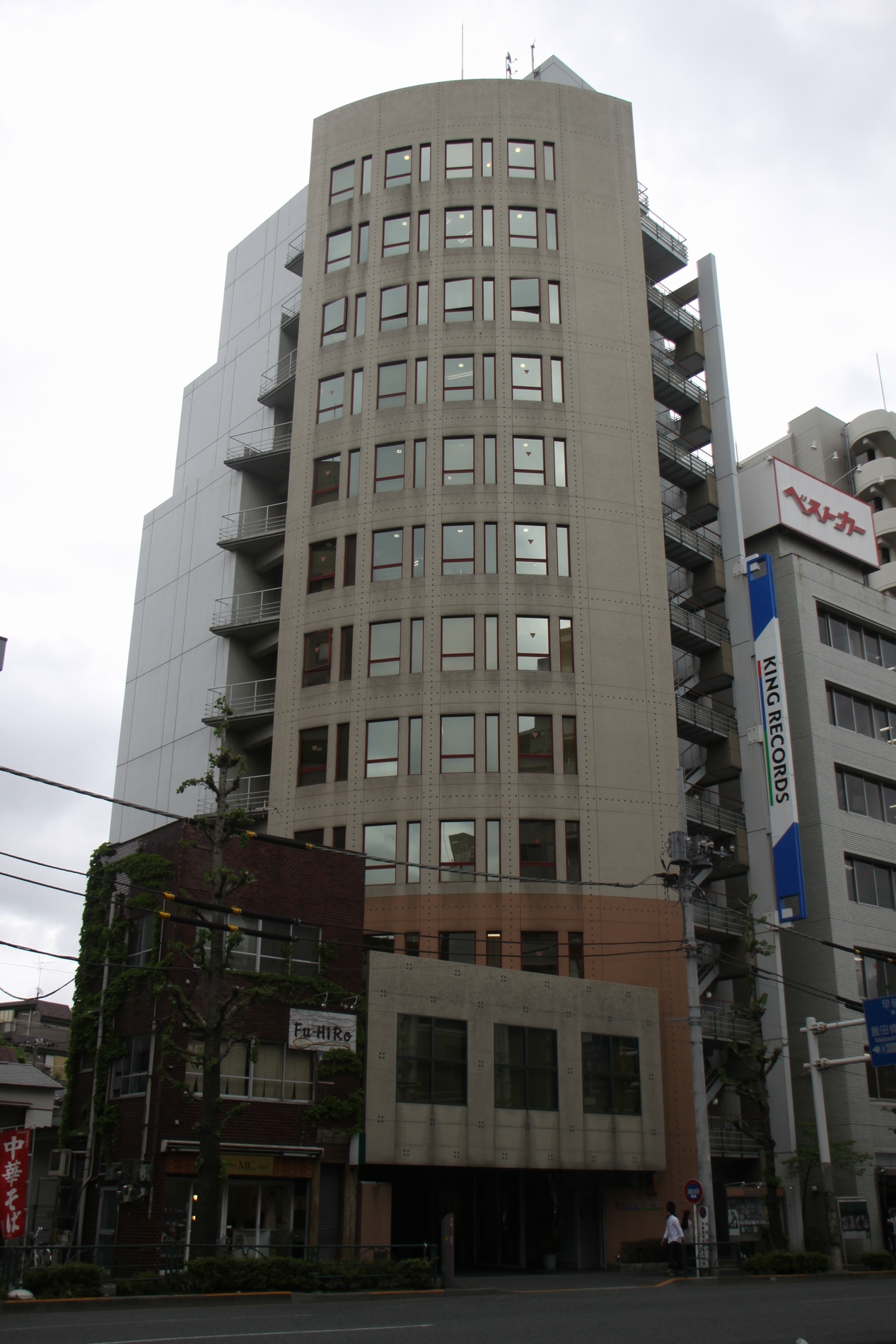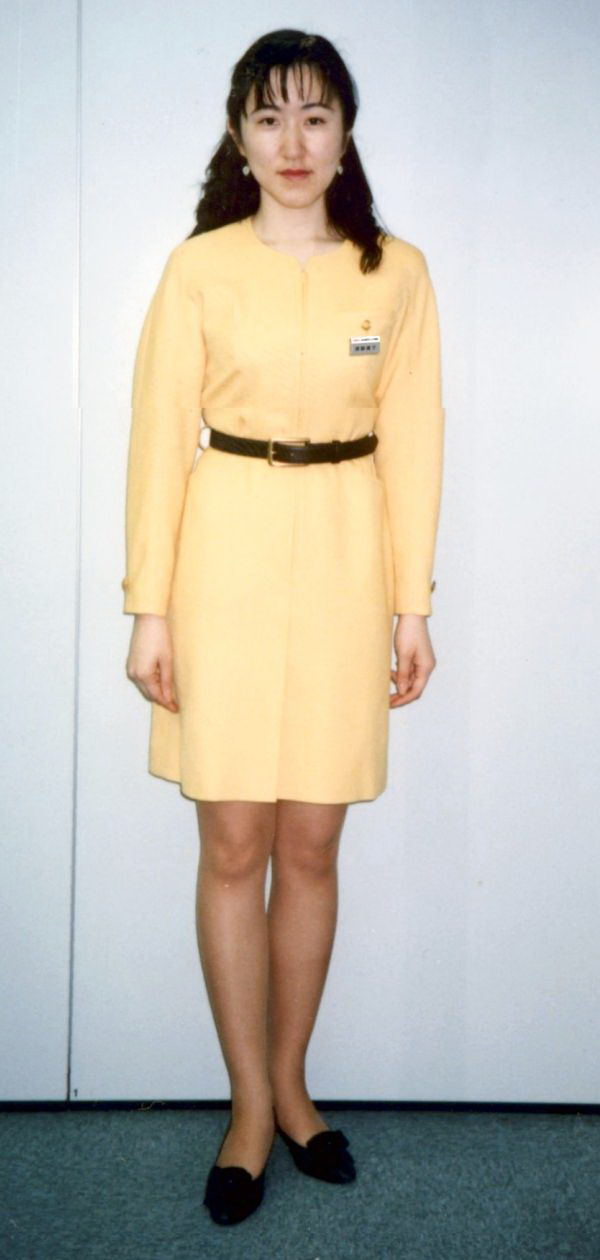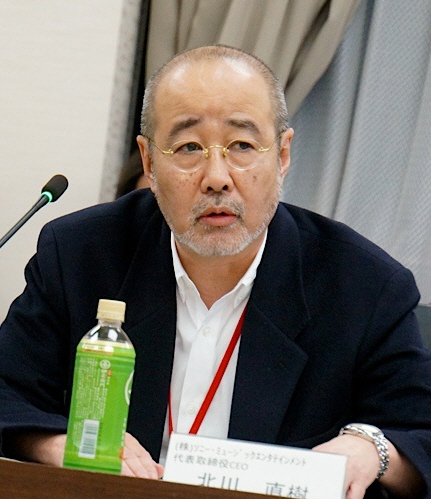|
Sea Paradise (OL No Hanran)
is the 29th single by Japanese entertainer Miho Nakayama. Written by Nakayama and KNACK, the single was released on June 8, 1994, by King Records. Background and release "Sea Paradise (OL no Hanran)" was Nakayama's only single to be issued in CD+G format, allowing on-screen lyrics to be displayed on karaoke machines and some CD-ROM-based devices. On live TV performances of the song, Nakayama wore a pink office lady outfit. "Sea Paradise (OL no Hanran)" peaked at No. 9 on Oricon's weekly singles chart. It sold over 154,000 copies and was certified Gold by the RIAJ. Track listing All lyrics are written by Miho Nakayama is a Japanese singer and actress. She is affiliated with Big Apple Co., Ltd. Nakayama is nicknamed , and sometimes uses the pseudonyms or when she writes the lyrics. Biography History Nakayama was born in Saku, Nagano, Japan. Following her ...; all music is arranged by ATOM. Charts Certification References External links * * * {{Author ... [...More Info...] [...Related Items...] OR: [Wikipedia] [Google] [Baidu] |
Miho Nakayama
is a Japanese singer and actress. She is affiliated with Big Apple Co., Ltd. Nakayama is nicknamed , and sometimes uses the pseudonyms or when she writes the lyrics. Biography History Nakayama was born in Saku, Nagano, Japan. Following her mother's remarriage, her family moved to Koganei, Tokyo. There, Nakayama attended Koganei Municipal Junior High School. Idol career After being discovered by a talent scout while shopping in Harajuku, she made her debut on 21 June 1985 with her single " C", as well as a starring role in the film ''Be-Bop High School''. Throughout her career as a singer and actress, Nakayama recorded 22 studio albums and scored eight No. 1 singles on Oricon's charts; two of them selling over a million copies each. She also starred in a Famicom Disk System dating sim made by Nintendo titled '' Nakayama Miho no Tokimeki High School'', in which she played a high school student trying to mask her true identity. Acting career In 1995, director Shunji Iwai ca ... [...More Info...] [...Related Items...] OR: [Wikipedia] [Google] [Baidu] |
Pure White
is the 16th studio album by Japanese entertainer Miho Nakayama. Released through King Records on June 8, 1994, it features the single " Sea Paradise (OL no Hanran)". Like her previous studio releases '' Mellow'' and ''Wagamama na Actress is the 15th studio album by Japanese entertainer Miho Nakayama. Released through King Records on June 23, 1993, it is Nakayama's fifth studio release (after ''One and Only'', ''Mind Game'', ''Merry Merry'', and '' Dé eaya'') to not feature a si ...'', ''Pure White'' was self-produced and recorded in Los Angeles. The album peaked at No. 3 on Oricon's albums chart and sold over 112,000 copies. Track listing Personnel * Miho Nakayama – vocals * Keisuke Araki – keyboards * Yōichi Yamazaki –keyboards, piano * Kazushi Ueda – guitar * Masato Saitō – bass * Hisanori Kumamaru – drums Charts References External links * * * {{Authority control 1994 albums Miho Nakayama albums Japanese-language albums King Records (Jap ... [...More Info...] [...Related Items...] OR: [Wikipedia] [Google] [Baidu] |
J-pop
J-pop ( ja, ジェイポップ, ''jeipoppu''; often stylized as J-POP; an abbreviated form of "Japanese popular music"), natively also known simply as , is the name for a form of popular music that entered the musical mainstream of Japan in the 1990s. Modern J-pop has its roots in traditional music of Japan, and significantly in 1960s pop and rock music. J-pop replaced '' kayōkyoku'' ("Lyric Singing Music", a term for Japanese popular music from the 1920s to the 1980s) in the Japanese music scene. J-rock bands such as Happy End fused the Beatles and Beach Boys-style rock with Japanese music in the 1960s1970s. J-country had popularity during the international popularity of Westerns in the 1960s1970s as well, and it still has appeal due to the work of musicians like Charlie Nagatani and venues including Little Texas, Tokyo. J-rap became mainstream with producer Nujabes and his work on ''Samurai Champloo'', Japanese pop culture is often seen with anime in hip hop. Other tre ... [...More Info...] [...Related Items...] OR: [Wikipedia] [Google] [Baidu] |
Contemporary R&B
Contemporary R&B (or simply R&B) is a popular music Music genre, genre that combines rhythm and blues with elements of Pop music, pop, Soul music, soul, funk, Hip hop music, hip hop, and electronic music. The genre features a distinctive Record producer, record production style, drum machine-backed rhythms, Pitch correction, pitch corrected vocals, and a smooth, lush style of vocal arrangement. Electronic music, Electronic influences are becoming an increasing trend and the use of hip hop or electronic dance music, dance-inspired beat (music), beats are typical, although the roughness and grit inherent in hip hop may be reduced and smoothed out. Contemporary R&B vocalists often use melisma, and since the mid-1980s, R&B rhythms have been combined with elements of hip hop culture and music and pop culture and pop music. Pre-history According to Geoffrey Himes speaking in 1989, the progressive soul movement of the early 1970s "expanded the musical and lyrical boundaries of [R&B] i ... [...More Info...] [...Related Items...] OR: [Wikipedia] [Google] [Baidu] |
King Records (Japan)
, commonly known as King Records, is a Japanese record company founded in January 1931 as a division of the Japanese publisher Kodansha. It initially began operating as an independent entity in the 1950s. It later became part of the Otowa Group. Today, King Records is one of Japan's largest record companies which is not owned by a multinational entity. The label's headquarters are in Bunkyo, Tokyo. The label's name is actually based from the now-defunct '' Kingu'' magazine published by Kodansha from 1924 to 1957. Sub-labels Its Starchild label, was managed by animation producer Toshimichi Ōtsuki, specialised in anime music and film. King Records also distributes the Up-Front Works–owned and –operated labels Piccolo Town and Rice Music, and also released video games for the PC-88, Famicom, and MSX2 computers. On February 1, 2016, King Records restructured Starchild and renamed it King Amusement Creative. Paddle Wheel Records is a division of King Record Co. You! Be ... [...More Info...] [...Related Items...] OR: [Wikipedia] [Google] [Baidu] |
Tada Nakitaku Naru No
is the 28th single by Japanese entertainer Miho Nakayama. Written by Yurie Kokubu, Nakayama, and Masaki Iwamoto, the single was released on February 9, 1994, by King Records. Background "Tada Nakitaku Naru no" is composed in the key of B flat major and set to a tempo of 87 beats per minute. Nakayama's vocals span from G3 to D5. Lyrically, it tells the story of a woman feeling left behind by her friends who are getting married one by one. The song was used as the theme song of the TBS drama series , which also starred Nakayama. Nakayama performed the song on the 45th ''Kōhaku Uta Gassen'' in 1994, marking her seventh and final appearance on NHK's New Year's Eve special. In 2015, she performed the song for the first time in 18 years on national TV during the 2015 FNS Music Festival, earning the most-watched segment of the broadcast. She self-covered the song on her 2019 album ''Neuf Neuf''. Chart performance "Tada Nakitaku Naru no" debuted at number 3 on the Oricon Singles ... [...More Info...] [...Related Items...] OR: [Wikipedia] [Google] [Baidu] |
Hero (Mariah Carey Song)
"Hero" is a song by American singer-songwriter, and record producer Mariah Carey released on October 18, 1993, via Columbia Records as the second single from her third studio album, ''Music Box'' (1993). The song was originally recorded by Gloria Estefan. The song was written and produced by Carey and Walter Afanasieff. While writing the song, Carey did not connect to its style or sound, therefore forfeiting it over to Estefan who sang it for the soundtrack of the film of the same name (1992). However, after being convinced by Sony executive Tommy Mottola to keep it, she changed some of the lyrics to more precisely fit her personality. Lyrically, the song is regarded as one of Carey's most inspirational and personal ballads, with its protagonist declaring that even though people may feel discouraged or down at times, in reality, they are "heroes" if they look inside themselves and see their own inner strength; in time, it will help them "find the way". The song received mixed ... [...More Info...] [...Related Items...] OR: [Wikipedia] [Google] [Baidu] |
CD+G
CD+G (also known as CD-G, CD+Graphics and TV-Graphics) is an extension of the compact disc standard that can present low-resolution graphics alongside the audio data on the disc when played on a compatible device. CD+G discs are often used for karaoke machines, which use this functionality to present on-screen lyrics for the song contained on the disc. The CD+G specifications were published by Philips and Sony as an extension of the Red Book (CD standard) specifications. The first CD to be released with CD+G graphics was '' Eat or Be Eaten'' by Firesign Theatre in 1985. The CD+EG is a similar format that allows for better graphics, but has very rarely been implemented in releases. Design The CD+G format takes advantage of the six Compact Disc subcode channels R through W (which are unused in standard Compact Disc Digital Audio), to provide 6 extra bits in CD+G for graphics information per 24 bytes of audio data. When a disc is read at normal speed, these six channels provide ... [...More Info...] [...Related Items...] OR: [Wikipedia] [Google] [Baidu] |
Karaoke
Karaoke (; ; , clipped compound of Japanese ''kara'' "empty" and ''ōkesutora'' "orchestra") is a type of interactive entertainment usually offered in clubs and bars, where people sing along to recorded music using a microphone. The music is an instrumental version of a well-known popular song. Lyrics are usually displayed on a video screen, along with a moving symbol, changing colour, or music video images, to guide the singer. In Chinese-speaking countries and regions such as mainland China, Hong Kong, Taiwan and Singapore, a karaoke box is called a KTV. The global karaoke market has been estimated to be worth nearly $10 billion. History 1960s: Development of audio-visual-recording devices From 1961 to 1966, the American TV network NBC carried a karaoke-like series, ''Sing Along with Mitch'', featuring host Mitch Miller and a chorus, which superimposed the lyrics to their songs near the bottom of the TV screen for home audience participation. The primary differ ... [...More Info...] [...Related Items...] OR: [Wikipedia] [Google] [Baidu] |
Office Lady
An office lady ( ja, オフィスレディー, Ofisuredī), often abbreviated OL (, ), is a female office worker in Japan who performs generally pink-collar tasks such as secretarial or clerical work. Office ladies are usually full-time permanent staff, although the jobs they perform usually have relatively little opportunity for promotion, and there is usually the tacit expectation that they leave their jobs once they get married. Due to some Japanese pop culture influence in Mainland China, Taiwan and Hong Kong, the term is also in common usage there. However, the meaning of the word is slightly different. The term is also sometimes seen in Anglophone countries. History The rise in OLs began after World War II, as offices expanded. They were first known as "BGs" (for "Business Girls"), but it was later found that English-speakers used a similar acronym, B-girls, to refer to " bargirls". ''Josei Jishin'', a women's magazine, ran a competition to find a better name for th ... [...More Info...] [...Related Items...] OR: [Wikipedia] [Google] [Baidu] |
Oricon
, established in 1999, is the holding company at the head of a Japanese corporate group that supplies statistics and information on music and the music industry in Japan and Western music. It started as, which was founded by Sōkō Koike in November 1967 and became known for its music charts. Oricon Inc. was originally set up as a subsidiary of Original Confidence and took over the latter's Oricon record charts in April 2002. The charts are compiled from data drawn from some 39,700 retail outlets (as of April 2011) and provide sales rankings of music CDs, DVDs, electronic games, and other entertainment products based on weekly tabulations. Results are announced every Tuesday and published in ''Oricon Style'' by subsidiary Oricon Entertainment Inc. The group also lists panel survey-based popularity ratings for television commercials on its official website. Oricon started publishing Combined Chart, which includes CD sales, digital sales, and streaming together, on December 19, ... [...More Info...] [...Related Items...] OR: [Wikipedia] [Google] [Baidu] |
Recording Industry Association Of Japan
The is an industry trade group composed of Japanese corporations involved in the music industry. It was founded in 1942 as the Japan Phonogram Record Cultural Association, and adopted its current name in 1969. The RIAJ's activities include promotion of music sales, enforcement of Copyright law of Japan, copyright law, and research related to the Japanese music industry. It publishes the annual ''RIAJ Year Book'', a statistical summary of each year's music sales, as well as distributing a variety of other data. Headquartered in Minato, Tokyo, Minato, Tokyo, the RIAJ has twenty member companies and a smaller number of associate and supporting members; some member companies are the Japanese branches of multinational corporations headquartered elsewhere. The association is responsible for certifying Music recording sales certification, gold and platinum albums and singles in Japan. RIAJ Certification In 1989, the Recording Industry Association of Japan introduced the music reco ... [...More Info...] [...Related Items...] OR: [Wikipedia] [Google] [Baidu] |

.jpg)




